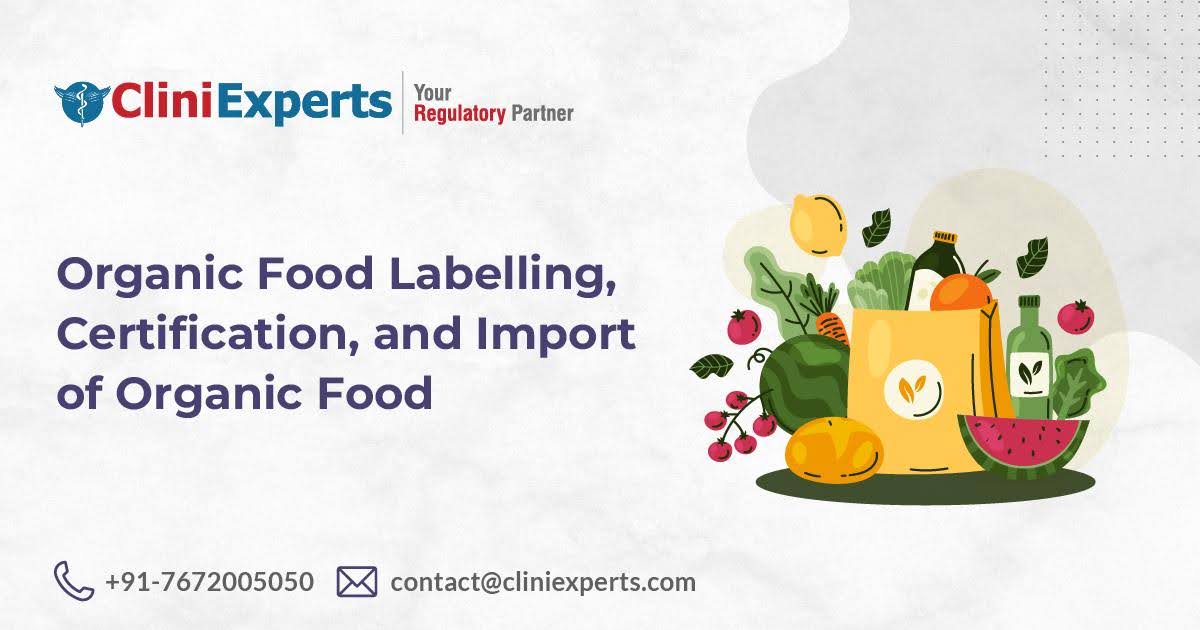Comparison of Initial Draft and Final Gazette Regulations for Alcoholic Beverages

FSSAI has framed regulations specifying the standards for the production and packaging of alcoholic beverages, the draft of which was released in September 2016. With Amendments, these regulations i.e. Food Safety and Standards (Alcoholic Beverages Standards) Regulations, 2018, specify the standards for manufacturing Alcoholic beverages and their packaging which include:
- Distilled Alcoholic Beverage (Brandy, Country Liquor, Gin, Rum, Vodka and Whisky, Liquor or Alcoholic cordial)
- Wines
- Beer
- It also specifies the specific requirement for labelling of Alcoholic Beverages in addition to the labelling requirements of Food Safety and Standards – Packaging and Labelling Regulations, 2011. The specific labelling requirements include thedeclaration of:
- Alcohol content
- Labeling of standard drink
- Not to contain any nutritional information
- No health claim
- Restriction on words ‘non-intoxicating’ or words implying similar meaning on label of beverage containing more than 0.5 per cent alcohol by volume
- Labelling of wine
- Allergen warning
- Statutory warning etc.
The new regulations have various amendments compared to the draft:
-
- The introduction of the following general requirements (applicable on all alcoholic beverages):
- Alcoholic beverages shall be free from chloral hydrate, ammonium chloride, paraldehyde, pyridine, diazepam or narcotic, psychotropic substances including caffeine except naturally occurring caffeine.
- Tolerance limit for ethyl alcohol content shall be ∓3% (∓5% in case of Wines) for up to 20%, and ∓0% for more than 20% abv of the declared strength.
- Sugar may be added for rounding-off of the alcoholic beverage.
- The water used for dilution forbottling shall meet the requirements as specified in Indian standards for Drinking Water, IS: 10500 as amended from time to time.
- Alcoholic beverages may contain additives, enzymes and processing aids as permitted under the FSS (Food Products Standards and Food Additives) Regulations, 2011.
- Any Alcoholic beverage when labelled as “matured”, shall be matured for at least a period of one year in oak or other suitable wood vats or barrels or with wooden chips.
- Where an age claim is made in conjunction with the word “aged”, the age must refer to the youngest spirit in the blend.
- For analyticalpurposes, test methods prescribed by FSSAI in “Manual of methods of analysis of Food-Alcoholic Beverages” as amended from time to time shall be used.
- Alcoholic beverages shall be packed in suitable containers as specified in FSS (Packaging and Labelling) Regulations, 2011: Provided that bulk containers shall have no upper limit for alcohol content, and shall meet the safety parameters of the product standards. Such products shall also carry a label declaring “For Manufacturer of Alcoholic Beverages only”.
- The draft had a separate category and specifications for Low alcoholic beverages, with 0.5-8% of Alcohol ABV. However, the new regulations has stated that the beverages containing not more than 8% abv may be called as low alcoholic beverage, and shall conform to the requirements of Table 1 except for residue on evaporation.
- In draft, the definition of brandy was – “an alcoholic liquor made from fruits such as grapes and other fruits that possesses the distinctive colour, odour and taste of its own”. Whereas the, gazette states that “Brandy is an alcoholic beverage made by distillation of wine. It may be aged or matured to possess aroma and taste characteristics of brandy.”
- The gazette does not contain anyseparate definitions or specifications for Cognac, Spiced country spirit, Arrack, Arak or Araq, pre-mix flavoured gin, premix-flavoured rum, Tequila, premix-flavoured Vodka, Swedish Vodka, Bourbon, Rye Whisky, Irish Whisky, Scotch Whisky, Tennessee Whisky, Vatted Malt Whisky, Pilsner, Root Beer, Flavoured beer, Blended beer and Irish Beer, which were all mentioned in the Draft.
- The draft defined Fenny or Feni as a type of Distilled country spirit, whereas the gazette has a separate category (2.3) Fenny or Feni, the specifications for which have been included in table 1 for both Cashew and coconut Fenny.
- Definition for all types flavoured Liqueur or Cordial or Aperitifs given in the draft has been replaced with a general definition for all i.e. “Liqueur or cordial or aperitif is an alcoholic beverage made from distilled spirit of agricultural origin that is flavoured with fruit, cream, herbs, spices, essential oils, and products of botanical origin. It may contain more than 2.5% of sucrose, dextrose, laevulose natural sweeteners (like honey), or a combination thereof”.
- A new beverage category 2.9 for Pot- still distilled spirit has been added and the specifications for the same have been included in Table 1.
- Various changes have been made in Draft and Gazette regulations for Wine standards, such as:
- Instead of a category – vintage wine, gazette has specified a general requirement i.e. for a wine to be called as vintage wine, “It should be made from grapes, at least 85% of which were grown in a particular year and labelled as such. A season’s yield of wine from a vineyard is vintage wine”.
- Wine produced from grapes have been put under a single category, 3.1.1 – Table Wines.
- Instead of a separate category, Rose wine has been defined as a part of category 3.1.1.1- Red Wine.
- Similarly, dry wine, medium-dry wine, medium sweet wine and sweet wine have also been defined under category,1.1.2 – White wine.
- A new category, “3.1.2 Based on carbon dioxide content” has been introduced, which includes, “3.1.2.1 Semi-sparkling or Crackling wine”, “3.1.2.2 Sparkling wine” and “3.1.2.3 Carbonated wine”.
- In case of Dry and Extra-Dry Sparkling wine, atolerance of ∓3% sugar has been specified.
- The specifications of Port, Sherry, Madeira, and Marsala have been omitted from category of Fortified wines and a sub-category “3.1.3.1 Aromatized wine” has been introduced with the specifications for“Vermouth”, “Bitter aromatized wine” and “Dessert wine”.
- A broader category “3.1.4 Wine from fruits other than grapes” has been introduced, with sub-categories “3.1.4.1 Cider”, “3.1.4.2 Perry” and “3.1.4.3 other fruit wines”.
- Similarly, category “3.1.5 Wine from other agricultural and plant sources” has been introduced with sub-categories “3.1.5.1 Palm Wine” and “3.1.5.2 Bamboo Wine”.
- Separate specifications of “Aperitif wine”, “Still Wine”, “Champagne”, “Retsina wine”, “Fruit Wine”, “Natural Wine”, “Sake”, Cashew Wine”, “Mead”, “Boukha”, and “Botrytizedwines” have been omitted.
- In the standards for Beer and Draught beer, the draft regulations had classification them as Light, Standard, Strong and Super Strong.However, the gazette regulations classifies them as Regular and Strong, based on the ethyl alcohol content range i.e. 0.5-5% and 5-8% respectively.
- The range of pH requirement for beer has also been changed from 3.8-4.5 to 3.3-4.8.
- The minimum amount of Carbon Dioxide (v/v) requirement has also been changed from 2.5 to a range of 1.8-3.6.
- Maximum limit for copper has been changed from 1 mg/l to 2 mg/l.
- The maximum value of TPC in case of Beer has been increased from 2 cfu per ml to <10 cfu per ml, and in case of draught beer it has been increased from 50 cfu per ml to <100 cfu per ml.
- The specific labeling requirements for alcoholic beverages has also been amended from draft to the gazette which include:
- The draft stated declaration of alcohol by volume.If the beverage has over 0.5% alcohol, it should be expressed in ml/100ml, or %v/v or %Vol or % ABV or % alc/vol alcohol by volume. Whereas, the gazette states that, alcohol content shall be expressed as percent abv or as proof.
- In case of imported alcoholic beverages, the provisions of FSS (Import) Regulations 2017, shall apply.
- All alcoholic beverages (even with >0.5% alcohol, exempted in draft) shall not contain any nutritional information on the label.
- In case of wine labelling-
- The draft stated that the label must show the origin of wine and the amount of alcohol indicated as dry, semi-dry, semi-sweet or sweet. Whereas, the gazette states that the label must show the origin (country or state) of wine and declare the amount of sugar.
- The draft stated labelling of generic name of grape/variety or raw material used, geographical origin and vintage dates for all, whereas the gazette states that it is applicable only if such claims are made.
- For a wine to bevintage, the minimum amount of wine that must come from that vintage has been increased from 75% to 85%.
- The specifications in the draft statedthat “if two grape varieties are to be named on the label, the name of varieties must be stated in the order of importance”.
- The statutory warning in draft, “Consumption of Alcohol is Injurious to Health” has been changed under the gazette and has to be presented in following manner:

- The introduction of the following general requirements (applicable on all alcoholic beverages):
These regulations came into force from the date of their publication in the Gazette, however the enforcement against these standards will come in effect from 1st April 2019.
We at CliniExperts provide consultation / services for the product compliance of all alcoholic and non-alcoholic beverages and their concentrates and premixes. For more information, please drop us a mail at contact@cliniexperts.com
REFERENCE
- Gazetted Food Safety and Standards (Alcoholic Beverages) Regulations, 2018. F. No. 2/SA-24/2009(1)/FSSAI- Dated 19th March, 2018, Published on April 5, 2018
Saurangi is a food regulatory expert with 8 years of experience. She shares her knowledge and insights on regulatory updates, food trends, best practices, and news. Follow her for expert insights and practical advice on all things for food regulatory
Saurangi Shah
CliniExperts Services Pvt. Ltd.
Recent Posts
Organic Food Labelling In India| Certification, and Import of Organic Food in India

This Article is All About Organic Food Labelling In India and Certification, and Import of Organic Food in India. Explained in Detail About What is Organic Food labelling? Summary Short Description Wi..
Cosmetic Label Compliance India : A Guide to Compliance

Introduction Looking for Cosmetic Label Compliance India? Are you a cosmetic manufacturer or importer navigating the complex world of Indian regulations? Ensuring your product labels comply with the l..
Clinical Investigation Approvals: An Overview of Forms MD-22 and MD-23

Summary Short Description Strict regulatory protocols govern clinical investigations for medical devices. Central to this process are forms MD-22 and MD-23. Form MD-22 is an application to Central Lic..
HAVE A QUERY?
REACH US!Office
New Delhi
Unit No. 324 & 325, City Centre Mall, Plot No. 5, Sector 12, Dwarka, India - 110075
+917672005050
Bengaluru
RMZ Galleria, 1st floor, Ambedkar Colony, Yelahanka, Bengaluru, Karnataka, India – 560064
Call us on
Sales: +91 7672005050
Reception: +91-11-45214546
Timings
9 am to 6 pm (Monday to Friday)


